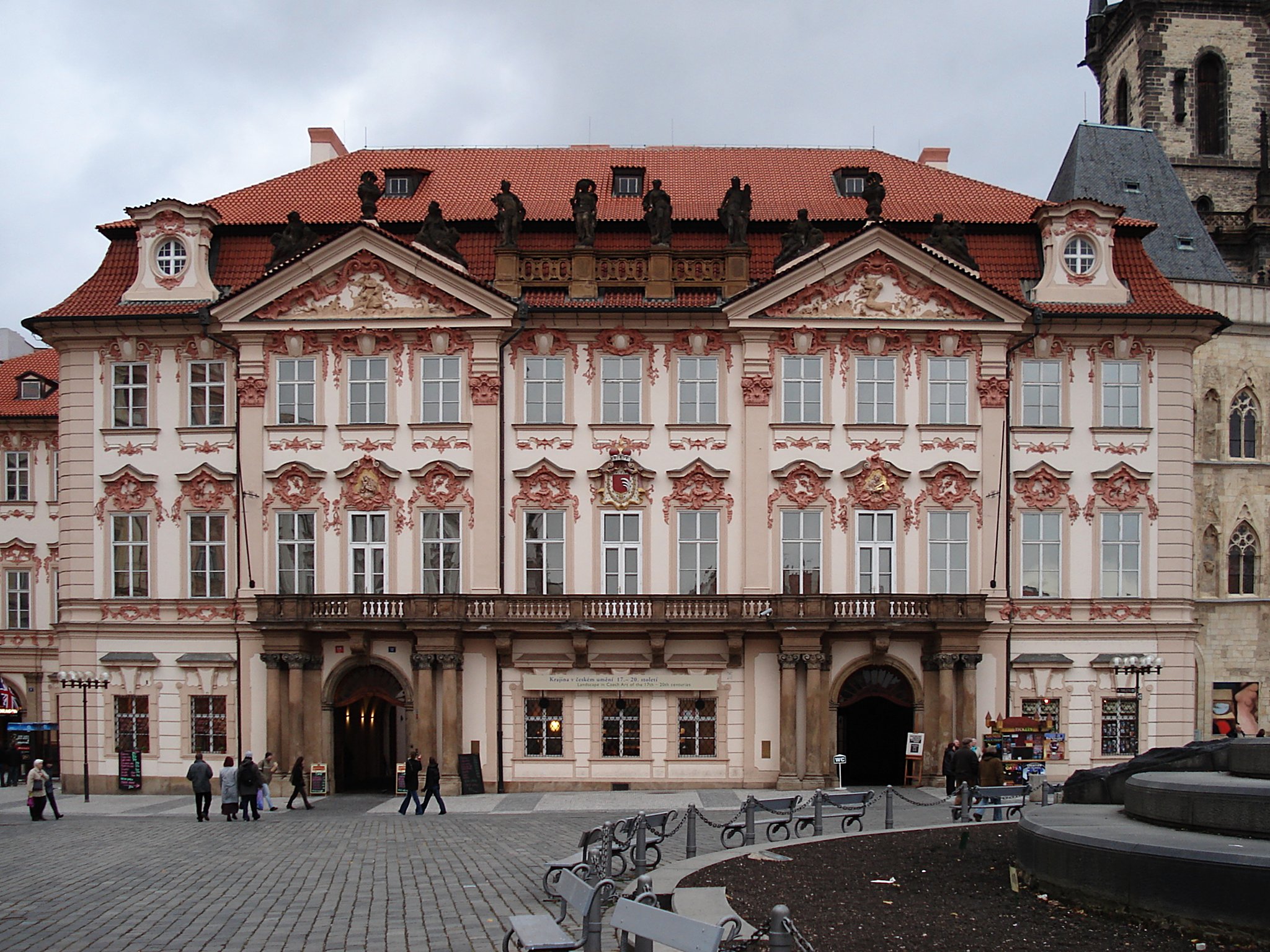|
Hofämterspiel
Hofämterspiel ("Courtly Household Cards"), one of the earliest packs of playing cards on record preserved in its entirety with all 48 cards intact, is a major 15th-century medieval handmade deck commissioned by Ladislaus the Posthumous, King of Hungary and Bohemia and Duke of Austria from 1453 to 1457. It was found among the great collection of art treasures of Archduke Ferdinand II of Tirol in castle Ambras, Austria, together with another called Ambraser Hofjagdspiel. Their heraldic suits represent, to an extent, "the political and dynastic relationships in Central Europe in middle of the 15th century" and are "of a quality unsurpassed at this early date." Illustrations The 48 cards of the deck, measuring c. 97 mm x 140 mm (3¾ in x 5½ in), are decorated with bright-colored tempera paint bear details in silver and gold leaf. The four suits of this set depicting court functions are represented by means of four heraldic colours. Each suit sign carries the coats of ar ... [...More Info...] [...Related Items...] OR: [Wikipedia] [Google] [Baidu] |
Ambraser Hofjagdspiel
The Ambraser Hofjagdspiel (Court Hunting Pack of Ambras; sometimes the Ambras falconer cards or the Courtly Hunt Cards) is a pack of cards painted around 1440–1445 and attributed to the engraver Konrad Witz from Basel, Switzerland. It originally consisted of fifty-six cards from which only 54 survive, all distributed in four suits, falcons, lures, hounds and herons, symbols related to hunting. Each suit contained ten pip cards with the 10s being represented by a banner like many old German playing cards and modern Swiss playing cards. There are four face cards per suit: the Unter, Ober, Queen, and King. It was found in a collection at the Ambras Castle, in Innsbruck, Austria, in the 16th century, and now figures as a precious item in the collection of cards of the Kunsthistorisches Museum (Museum of Art History) in Vienna. Facsimile A facsimile of the pack was produced as a boxed set in 1995 by Piatnik Wiener Spielkartenfabrik Ferd. Piatnik & Söhne, commonly referre ... [...More Info...] [...Related Items...] OR: [Wikipedia] [Google] [Baidu] |
Stuttgarter Kartenspiel
The Stuttgart pack or Stuttgart Cards () is one of the most valuable collections of the Landesmuseum Württemberg. It is a hunting-themed deck of playing cards painted on gilded pasteboard dating to around 1430.Wintle, Adam''Stuttgart pack, c.1430''at the World of Playing Cards. Retrieved 9 September 2016.Pollett, Andreaat Andy's Playing Cards. Retrieved 9 September 2016. They are thus among the earliest surviving packs of playing cards. Description 49 of the original 52 cards survive. The cards are divided into four suits of thirteen ranks. The suits of stags and hounds are led by female face cards (Queen, female Ober, female Unter) while the suits of ducks and falcons are led by men (King, male Ober, male Unter). The 10 of each suit is represented with a banner like in Swiss playing cards. The backs are uniformly painted with red lead. Facsimiles A limited edition facsimile of the cards was produced as a boxed set with accompanying booklet in German and English by an unknow ... [...More Info...] [...Related Items...] OR: [Wikipedia] [Google] [Baidu] |
Marshal
Marshal is a term used in several official titles in various branches of society. As marshals became trusted members of the courts of Middle Ages, Medieval Europe, the title grew in reputation. During the last few centuries, it has been used for elevated offices, such as in military rank and civilian law enforcement. In most countries, the rank of Field marshal, Marshal is the highest Army rank (equivalent to a five-star General of the Army (United States), General of the Army in the United States). Etymology ''Marshal'' is an ancient loanword from Old French ''mareschal'' (cf. Modern French ''maréchal''), which in turn is borrowed from Old Frankish *' "stable boy, keeper, servant", attested by Medieval Latin ''mariscalcus'' from a Proto-Germanic ''*maraχskalkaz'' (cf. Old High German ''marahschalh'')p. 93b-283a, T. F. Hoad, ''The Concise Oxford Dictionary of English Etymology'' (Oxford University Press, 1993) being still evident in Middle Dutch ''maerscalc'', ''marscal'', ... [...More Info...] [...Related Items...] OR: [Wikipedia] [Google] [Baidu] |
Ganjifa
Ganjifa, Ganjapa or Gânjaphâ, is a card game and type of playing cards that are most associated with Persia and India. After Ganjifa cards fell out of use in Iran before the twentieth century, India became the last country to produce them.At the start of the 21st Century production in India was still ongoing in the town of Sawantvadi in the west, and Odisha in the east for example. See Abram (2003: 53) and Crestin-Billet (2002: 189). The form prevalent in Odisha is Ganjapa. Description Ganjifa cards are circular or rectangular, and traditionally hand-painted by artisans. The game became popular at the Mughal Empire, Mughal court, and lavish sets were made, from materials such as precious stone-inlaid ivory or tortoise shell (''darbar kalam''). The game later spread to the general public, whereupon cheaper sets (''bazâr kalam'') would be made from materials such as wood, palm tree, palm leaf, stiffened cloth or pasteboard. Typically Ganjifa cards have coloured backgrounds, with ... [...More Info...] [...Related Items...] OR: [Wikipedia] [Google] [Baidu] |
Karnöffel
Karnöffel is a trick-taking card game which probably came from the upper-German language area in Europe in the first quarter of the 15th century. It first appeared listed in a municipal ordinance of Nördlingen, Bavaria, in 1426 among the games that could be lawfully played at the annual city fête. This makes the game the oldest identifiable European card game in the history of playing cards with a continuous tradition of play down to the present day. History The earliest substantial reference to Karnöffel is a poem by Meissner, written in or before 1450. Historically ''karnöffeln'' meant "to cudgel, thrash or flog", but in medieval times, a ''Karnöffel'' was also the word for an inguinal hernia. Karnöffel had a suit, the 'chosen suit', in which some cards had a higher priority than cards in other suits, which indicates that it might be a possible precursor to the trump suit of Tarot. The earliest forms of Karnöffel utilized a deck of 48 cards, Aces having been removed ... [...More Info...] [...Related Items...] OR: [Wikipedia] [Google] [Baidu] |
Piatnik
Wiener Spielkartenfabrik Ferd. Piatnik & Söhne, commonly referred to as Piatnik, is an Austrian playing card and board game manufacturing company based in Vienna. History The company was founded in 1824 by the card manufacturer Anton Moser (1784–1842) in Vienna's 7th district. Upon his death, his professional colleague the Hungarian-born Ferdinand Piatnik (1819–1885) took over in 1843, marrying Moser's widow a few years later. Piatnik's three sons joined the ranks in 1882 adding their names to their father's company name. Ferdinand died in 1885, leaving the successful business to his sons and his widow. In 1891, a new factory building was built on Hütteldorfer Straße in the 14th district. In 1896, the firm of ''Piatnik Nándor és Fiai'' was founded as a sister company. Piatnik continued to expand and in 1899 bought the playing card manufacturer, ''Ritter & Cie'' in Prague. As early as 1923 Piatnik received an 'irrevocable' national award and thus the right to use th ... [...More Info...] [...Related Items...] OR: [Wikipedia] [Google] [Baidu] |
Trick-taking Game
A trick-taking game is a card- or tile-based game in which play of a ''hand'' centers on a series of finite rounds or units of play, called ''tricks'', which are each evaluated to determine a winner or ''taker'' of that trick. The object of such games then may be closely tied to the number of tricks taken, as in plain-trick games such as contract bridge, whist, and spades, or to the value of the cards contained in taken tricks, as in point-trick games such as pinochle, the tarot family, briscola, and most evasion games like hearts. Trick-and-draw games are trick-taking games in which the players can fill up their hands after each trick. In most variants, players are free to play any card into a trick in the first phase of the game, but must ''follow suit'' as soon as the stock is depleted. Trick-avoidance games like reversis or polignac are those in which the aim is to avoid taking some or all tricks. The domino game Texas 42 is an example of a trick-taking game that i ... [...More Info...] [...Related Items...] OR: [Wikipedia] [Google] [Baidu] |
Amerika (novel)
''Amerika'' (German working title ''Der Verschollene'', "The Missing"), also known as ''Amerika (The Man Who Disappeared)'', ''Amerika: The Missing Person'' and ''Lost in America'', is the incomplete first novel by author Franz Kafka (1883–1924), written between 1911 and 1914 and published posthumously in 1927. The novel originally began as a short story titled "The Stoker". The novel incorporates many details of the experiences of his relatives who had emigrated to the United States. The commonly used title ''Amerika'' is from the edition of the text put together by Kafka's close friend, Max Brod, after Kafka's death in 1924. It has been published in several English-language versions, including as ''Amerika'', translated by Edwin and Willa Muir (1938); as ''Amerika (The Man Who Disappeared)'', translated by Michael Hofmann (1996); as ''Amerika: The Missing Person'', translated by Mark Harman (2008), as ''Lost in America'', translated by Anthony Northey (2010), and as ''The Ma ... [...More Info...] [...Related Items...] OR: [Wikipedia] [Google] [Baidu] |
Franz Kafka
Franz Kafka (3 July 1883 – 3 June 1924) was a novelist and writer from Prague who was Jewish, Austrian, and Czech and wrote in German. He is widely regarded as a major figure of 20th-century literature. His work fuses elements of Literary realism, realism and the fantastique, and typically features isolated protagonists facing bizarre or surreal predicaments and incomprehensible socio-bureaucratic powers. It has been interpreted as exploring themes of social alienation, alienation, existential anxiety, guilt (emotion), guilt, and absurdity. His best-known works include the novella ''The Metamorphosis'' (1915) and the novels ''The Trial'' (1924) and ''The Castle (novel), The Castle'' (1926). The term '':en:wikt:Kafkaesque, Kafkaesque'' has entered the English lexicon to describe bizarre situations like those depicted in his writing. Kafka was born into a middle-class German- and Yiddish-speaking Czech Jewish family in Prague, the capital of the Kingdom of Bohemia, which b ... [...More Info...] [...Related Items...] OR: [Wikipedia] [Google] [Baidu] |
Mantegna Tarocchi
The Mantegna Tarocchi, also known as the Tarocchi Cards, Tarocchi in the style of Mantegna, Baldini Cards, are two different sets each of fifty 15th-century Italian old master prints in engraving, by two different unknown artists. The sets are known as the E-series Tarocchi Cards and the S-series Tarocchi Cards (or E series, e-series etc.), and their artists are known as the “Master of the E-series Tarocchi” and the “Master of the S-series Tarocchi”. There are also a number of copies and later versions. Despite their name, they are educational visual aids, showing personifications of social classes or abstractions. Name a misnomer The name appears to be a mistaken confusion by later writers with the contemporary card-game of Tarocco, which includes many extra picture-cards. Mantegna Tarrochi were not used for card games or divination, but were likely educational tools for upper-class children, although no documentation of their use survives. Some sets bound up in book ... [...More Info...] [...Related Items...] OR: [Wikipedia] [Google] [Baidu] |








